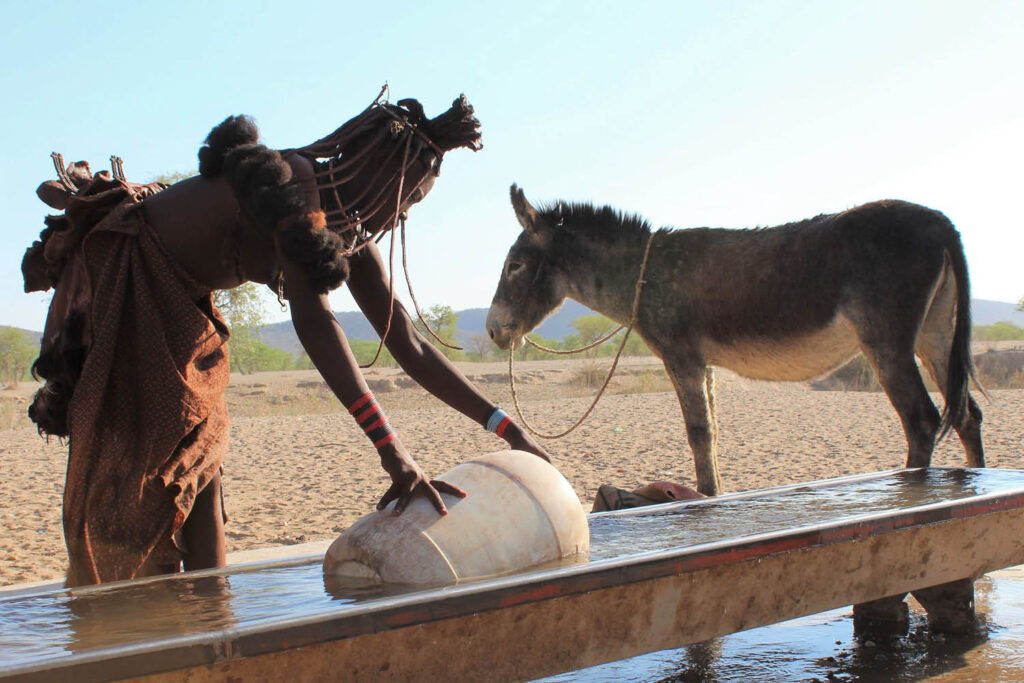How we manage excreta from animals and humans is not just a health issue but a matter of great importance for farming. The topic is explored in a new policy brief and seminar with contributions from SIANI’s Linus Dagerskog. Conclusion: this is a resource that must not be wasted.
Why are animals so invisible in discussions about water, sanitation and hygiene (WaSH)? The question is at the core of the new policy brief Putting animals on the WASH agenda, written by the Stockholm International Water Institute with input from SIANI. Animals are in many contexts important water transporters, water users and water polluters but are rarely considered in WaSH interventions.
Among other recommendations, the brief advocates for more of a One Health approach, balancing human, animal and ecosystem health. Linus Dagerskog, Research Fellow at the Stockholm Environment Institute, has led a WaSH-One Health network and worked on the important links between sanitation and agriculture. When speaking at the seminar where the policy brief was launched, he described how WaSH interventions traditionally have mainly focused on human health and the risks related to contamination from human waste. Other aspects are often overlooked, including how poor management of animal excreta can contribute to the spread of disease, reduce soil fertility and harm water bodies. Linus Dagerskog sees this as unfortunate:
“How we handle excreta is crucial both for the environment and for agriculture: either we create problems for aquatic ecosystems, or we recycle the resources safely and sustain food production.”
Excreta contains large quantities of nutrients and organic matter which can cause dead zones in aquatic systems. Yet the same nutrients are essential for agricultural productivity and are needed to increase yields.
The key issue is to ensure that nutrients are recycled, Linus Dagerskog argues, offering nitrogen as one example. According to estimates, around 150 million tonnes of reactive nitrogen are added to agricultural lands every year, which is roughly twice the amount considered to be within the safe planetary boundary. To reduce the need for “new” nitrogen, we must improve crops’ uptake efficiency for nitrogen and achieve a higher degree of nutrient recycling. FAO estimates that 65% of nitrogen in livestock excreta is recycled, while the rest becomes a burden on the environment. For nitrogen in human excreta, estimates vary but are very low, most likely less than 10% is recycled, Linus Dagerskog says, adding:
“By optimising human and livestock excreta recycling we could maybe get another 40 million tonnes of nitrogen back and reduce the need for new nitrogen. This must be done systematically, WaSH and agriculture need to work closely together all over the world, in rich and poor countries.”
The implications could be especially valuable for smallholder farmers who struggle with low yields and high dependency on scarce resources. This is a key finding from the Clean and Green Framework which SEI and WaterAid have developed and piloted in three villages in Burkina Faso. The aim was to integrate the management of risks and resources from local waste and residues to improve health and agricultural production. The SIANI expert group on waste recovery in Burkina Faso is now analysing the results to identify important lessons. But some takeaways are already apparent, according to Linus Dagerskog:
“A conclusion is that these systems approaches are very demanding but also very rewarding. The shift from focusing on a technology to actually managing resources and risks is also an innovation.”
Watch the seminar here: SuSanA Online Event: Putting animals on the WASH agenda – launch of policy brief (youtube.com)
